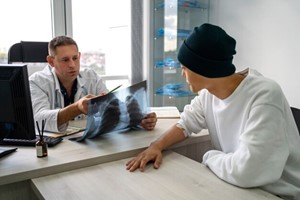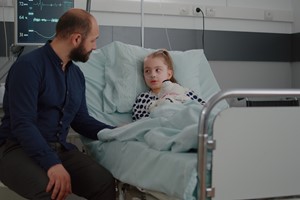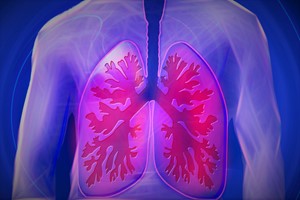The American College of Chest Physicians (CHEST) recently published updated clinical practice guidelines in Chest for respiratory management in patients with neuromuscular weakness, featuring 15 evidence-based recommendations. Developed by an expert panel comprising adult and pediatric pulmonologists, critical care specialists, sleep medicine specialists, a respiratory therapist, a methodologist, and a patient representative, the guidelines address the unique considerations of each patient's underlying neuromuscular disease process. The panel formulated 9 clinical questions using the PICO format, conducting literature searches in November 2018, September 2020, and July 2021. The analysis, involving 128 studies, resulted in 15 graded recommendations, 1 good practice statement, and 1 consensus-based statement. The certainty of evidence was assessed using the GRADE approach, with each statement requiring a 75% voting participation rate and at least 80% consensus for approval and inclusion.
Pulmonary Function Testing
The panel issued a good practice statement for the use of pulmonary function testing (PFT) in patients with NMD with a risk for respiratory complications. Spirometry with forced or slow vital capacity (FVC or SVC) and maximum inspiratory and expiratory pressure (MIP/MEP) or sniff nasal inspiratory pressure (SNIP) and peak cough flow (PCF) was recommended for consideration in patients with NMD, when available. The panel also provided a conditional recommendation that PFT at least every 6 months is more beneficial than yearly or as-needed testing (ungraded consensus-based statement).
Screening for Respiratory Failure and Sleep-Related Breathing Disorders
The panel issued a conditional recommendation (very low certainty of evidence) that, among symptomatic patients with NMD who have normal PFT and overnight oximetry (ONO), clinicians should consider polysomnography to determine whether noninvasive ventilation (NIV) is clinically indicated.
The panel noted that polysomnography is not necessary in adult patients with NMD if PFT or ONO criteria support using NIV and that full polysomnography is recommended at least once in pediatric patients and adults with symptoms such as daytime tiredness, history of snoring, and apneic episodes.
Noninvasive Ventilation
A strong recommendation (very low certainty of evidence) was provided for using NIV in patients with NMD and chronic respiratory failure. The panel stated that the desirable effects of NIV were moderate, and the undesirable effects were small, with no clear harm. A conditional recommendation (very low certainty of evidence) was made for using NIV in patients with NMD and sleep-related breathing disorders.
The panel issued a conditional recommendation (very low certainty of evidence) for patients with NMD to get diagnostic testing to predict the timing of NIV initiation. The testing that may be needed depends upon the patient and their situation; tests that may be appropriate include measurement of FVC or maximum inspiratory and expiratory pressure as well as overnight oximetry or polysomnography to gain evidence of sleep-disordered breathing or hypoventilation. For patients with NMD who need NIV, the research group made a conditional recommendation for individualizing NIV treatment to achieve ventilation goals (very low certainty of evidence).
For patients with NMD and preserved bulbar function who use NIV, the panel recommended mouthpiece ventilation (MPV) for daytime ventilatory support as an adjunct to nocturnal mask NIV (conditional recommendation, very low certainty of evidence).
Mechanical Ventilation
The panel recommended invasive home mechanical ventilation (MV) with a tracheostomy as an alternative to NIV (conditional recommendation, very low certainty of evidence) for patients with NMD who failed NIV or were intolerant of NIV and had worsening bulbar function, frequent aspiration, insufficient cough, episodes of chest infection despite adequate secretion management, or declining lung function. The researchers noted that invasive MV at home by tracheostomy could potentially provide substantial benefit, including survival and improvement in sleep quality, whereas the absence of ventilatory support might result in undesirable effects such as increased risk of hospitalization, a lower quality of life, and caregiver burden. “The preponderance of evidence favors invasive home MV via tracheostomy as a treatment option for patients with progressive respiratory failure, particularly those unable to clear secretions or with changes in mental status such as frontotemporal dementia,” noted the guideline authors.
Sialorrhea
The management of patients with sialorrhea is a high priority in NMD, according to the expert panel. Salivary secretion management included the use of anticholinergic agents, botulinum toxin (BT) therapy, and radiation therapy (RT). Sialorrhea can lower the patient’s quality of life and increase the risk of aspiration and pneumonia due to problems with swallowing, airway protection, and cough effectiveness.
For patients with NMD and sialorrhea, the panel recommends a therapeutic trial of an anticholinergic medication as first-line therapy with continued use only when there are perceived benefits compared with side effects (conditional recommendation, very low certainty of evidence). Among patients with NMD and sialorrhea who have an inadequate response or are intolerant of the side effects of anticholinergic therapy, the panel recommends botulinum toxin therapy to salivary glands (conditional recommendation, very low certainty of evidence). In patients with NMD and sialorrhea who have an inadequate response or are intolerant of the side effects of anticholinergic therapy, the panel also recommended salivary gland radiation therapy (conditional recommendation, very low certainty of evidence).
The researchers noted that botulinum toxin therapy is inexpensive, the injections are simple and not overly uncomfortable, and the beneficial effect on salivary function can last weeks to months. Limited data are available regarding radiation therapy for sialorrhea in patients with NMD.
Airway Clearance Therapies
Airway clearance techniques reviewed included glossopharyngeal breathing, mechanical insufflation-exsufflation (MI-E), manually assisted cough, lung volume recruitment (LVR) by air stacking, and high-frequency chest wall oscillation (HFCWO). The panel recommends that clinicians consider glossopharyngeal breathing for LVR and airway clearance in patients with NMD and hypoventilation (conditional recommendation, very low certainty of evidence).
Manually assisted cough techniques used independently or added to other modalities such as LVR are recommended in patients with NMD and reduced cough effectiveness (conditional recommendation, very low certainty of evidence).
Among patients with NMD and reduced lung function or cough effectiveness, the panel recommends regular use of LVR (breath stacking) with a handheld resuscitation bag or mouthpiece (conditional recommendation, very low certainty of evidence). In patients with NMD and reduced cough effectiveness who do not adequately improve with alternative techniques, adding regular MI-E is recommended (conditional recommendation, very low certainty of evidence).
The panel recommends that patients with NMD and difficulties with secretion clearance undergo high-frequency chest wall oscillation (HFCWO) for secretion mobilization. The guideline also suggests that HFCWO can be combined with airway clearance treatments such as cough assistance or LVR (conditional recommendation, very low certainty of evidence).
pulmonologyadvisor.com
Colby Stong












